It is difficult to meet a person who will be indifferent to the apricots. It is especially difficult to meet a dacket, who would not dream to grow in his area on a tree with such fragrant fruits. And, if it is not uncommon for southern territories, then areas with fruiting apricots in the Urals are a little more troublesome business for gardeners. Countries with a colder climate are still an unconventional place of growth for such a culture. But, if you have a great desire, there is nothing impossible for you. In this article, we will consider the greatest difficulties that the Urals will have to face with the cultivation of apricots, the ways to overcome them, the secrets of the care and the correct planting of apricot in cold climatic conditions, the details of choosing the right grade for landing and much more.
Apricot: Culture Description
Apricots are not in vain called "long futies", "sunny fruits". Not so long ago, scientists conducted studies in order to reveal the secret of the longevity of one ancient tribe in Tibet, which was distinguished by a high life expectancy. And what was the surprise when scientists learned that the apricots were one of the prevailing foods of food 90-100-year-olds. In this Tibetan tribe, they were prepared by all known ways: and dried, and cooked, and baked. After that, reinforced research was carried out regarding the utility of apricots for the human body. It is believed that the birthplace of apricot is China. Although translated from Latin Apricot means "Armenian Apple". The characteristic features of the apricot are:
- apricot is a leaf fall tree with a beautiful crown and a bark of a grayish shade;
- the tree can reach 5-8 meters in height;
- on thin stiffs there are egg-shaped or rounded leaves of up to 9 cm;
- flowers can have white, pinkish, white with pink streaks color;
- the fruit of an apricot juicy, fleshy, with a characteristic aroma, with a longitudinal groove, with a bone inside and orange-reddish;
- apricot tree begins to bring stable yields from 3-5 years of age;
- apricot is considered to be a southern plant, but there are also frost-resistant varieties that are withstanding frost to -30 degrees, which allows you to cultivate this culture in the Urals;
- apricot trees are capable of living up to 100 years.
Useful properties and apricot applications
Why do the summer houses strive to grow at least one apricot tree in their area? What is so special in these fruits? The first and one of the most important reasons that comes to mind is a completely special and incomparable taste of apricots. What could be more pleasant to fragrant jam from apricots grown in their plot? In addition to its high taste quality, apricot fruit contains:
- carotene;
- vitamins B1, B2, B6;
- vitamin C;
- vitamins P, pp;
- potassium;
- iron;
- magnesium;
- phosphorus;
- iodine;
- calcium;
- lemon acid;
- wine and apple acid;
- inulin;
- tannins;
- dextrin;
- starch;
- pectin.
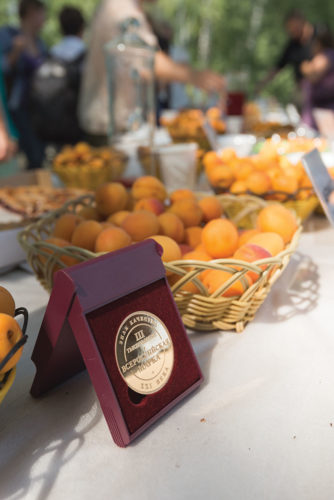
Ripe apricot fruits may contain up to 27% of natural sugars, thanks to which apricots are perfectly quenched with hunger and are widely used in dessert dishes. Thanks to its rich composition, apricots are especially useful to people if they want:
- improve the operation of the gastrointestinal tract;
- intensify the metabolism;
- beneficially affect the work of the cardiovascular system;
- carry out the prevention of Malokrovia;
- activate the brain and improve memorization processes;
- remove overvoltage, having a beneficial effect on the work of the nervous system;
- reduce increased blood pressure;
- antioxidants contained in the fruit of apricot, according to some data, are able to reduce the risk of lung cancer, stomach, esophagus;
- lead to equilibrium hormonal background and saturate the body with some vitamins for pregnant women;
- get a daily dose of vitamin A for an adult, drinking 150 grams of fresh apricot juice;
- help in the treatment of bronchitis, laryngitis with the help of apricot oil;
- kuraga is a valuable food for pregnant women, children and the elderly.
Apricots, as you can see, can bring huge benefit the human body. Folk healers have long taken to note this "Fruit of longevity" and are often used in the preparation of recipes of traditional medicine. For example, Apricot fruits showed their good effect in the treatment of bronchitis, bronchial asthma, laryngitis and other respiratory diseases. A recipe was very popular on the basis of nucleoli from the bones of apricots in the fight against similar ailments. You will need 20 grams of nucleoli to chop into the powder and take it 1 tsp. During the day, drinking tea or water.
Apricots found application not only as food, but also:
- in pharmacology. Many drugs have an apricot oil in their composition, which has a low viscosity and is perfect for dissolving many drugs;
- in cosmetology. Cosmetology successfully applies both apricot oil, and the bones of these fruits, which in crushed form act as an excellent natural scrub;
- in the manufacture of musical instruments. The apricot wood is a valuable breed for creating wind instruments;
- in the production of alcoholic beverages. For this purpose, even an apricot bone is often used, the extract of which flavors flavors and liqueurs;
- in cooking. This is perhaps the widest scope of the use of apricot fruits. From it, housewives have long been learned to make amazing jams, jams, marmalade, often used for baking, etc.
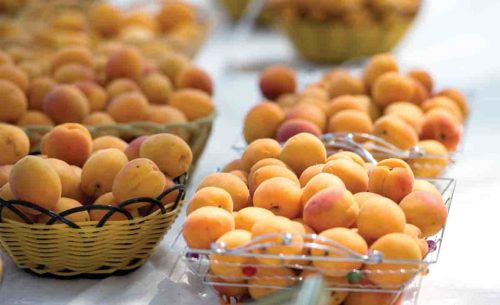
Contraindications to the use of apricots
Despite the fact that the composition of the fruit of apricots is rich in valuable by trace elements and vitamins, some categories of people are partially, or even completely, refuse to eat these fruits into food. It is worth noting the apricots in food, if you have:
- gastritis with increased acidity of the stomach;
- ulcer of the gastrointestinal tract;
- if you have diabetes, it is necessary to abandon the apricots due to the excessive content of sugars in their composition;
- if you suffer from liver diseases or pancreatitis;
- if you suffer a disadvantage of vitamin A, at the same time having problems with the thyroid gland, then use only fresh apricots to replenish the reserves of this vitamin inefficiently;
- if you eat a sufficiently large amount of fresh fruit apricot, it can provoke diarrhea;
- it is better not to use fresh apricots on an empty stomach, because problems with digestion may appear;
- if you suffer from low pressure, then take me to food with cauragua, because It can reduce pressure even more, slow down heartbeat.
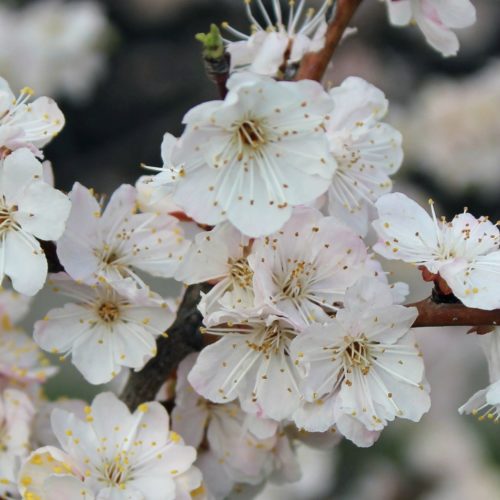
Apricot varieties for the Urals
Thanks to the unique works of breeders, the Gardeners of the Urals can successfully grow apricots in their sections. Of course, the taste qualities of the "Ural" apricots will differ from southern varieties. But this fact does not significantly reduce their values. The cultivation of ordinary southern apricot varieties is simply impossible in the harsh conditions of the Urals and Siberia. Varieties that are intended for cultivation in these areas must be prepared to transfer:
- abnormally low temperatures in winter - up to minus 40 degrees;
- sudden frosts in the spring months;
- sharp temperature differences in day and night;
- moisture stagnation in the soil after melting of snow;
- long thaws.
Gudders should also distinguish the concepts of "winter hardiness" and "frost resistance". Frost resistance of the grade means stability of this variety only to low temperatures in the winter. Winter hardiness of the variety is more wider. Such varieties are adapted to transfer not only low temperatures, but also other adverse factors, such as solar burns in winter, temperature differences, etc. In order to obtain varieties suitable for cultivation in the Urals, ordinary varieties with wild-growing apricots were crossed, which have good winter-hardy characteristics. Among the best varieties of apricots for the Urals, you can also list the gold bone, Uralets, Honey, Snezhinsky, etc.
Apricot Manchursky for the Urals
Apricot Manchurian - this is quite rare. But a very beautiful tree that has winter-hardy characteristics. Fruits are not large, weigh 10-20 grams, they seem to be suiced to taste. This variety can withstand the temperature decrease to minus 30 degrees, but provided that this decrease will be gradual. The tree can grow up to 12 meters in height. The fruit of Apricot Manchurian is valued more in a processed form - in the form of jams, jam, in the form of dried fruits.
Apricot Siberian for the Urals
Siberian apricot grows in Mongolia, China, Siberia. Differs from Manchurian apricot smaller than adult wood - 5 meters of height. The fruits of this apricot are also small, crack in maturation and almost incredible due to tart and sour taste. The flowering of Siberian apricot lasts about 10 days and looks very effectively due to the presence of a red shade in white colors. Apricot Siberian is characterized as a tree with excellent frost-resistant qualities - it can withstand temperatures up to minus 45 degrees.
Apricot Siberian Baikalova for the Urals
Another grade designed for cultivation in areas with anomalous low temperatures in winter. Apricot Siberian Baikalov is able to withstand up to minus 35 degrees of frost. Ripens early - in early August. From one adult tree you can collect a crop to 25 kg. The fruits are quite large and possess a pleasant sweet taste. Well ripened fetal pulp is easily separated from the bone.
Apricot East Siberian for the Urals
Apricot East Siberian is a variety that is obtained by crossing the Manchurian and ordinary apricot. Fruits have an even more tender pulp than Siberian Baikalov, have a pronounced groove. The variety of early ripening. The disadvantages of this variety consider the tendency to squeeze the root neck during a period of long thawing and frozen wood, despite its good frost resistance.
Apricot Northern Light for the Urals
Northern radiance varieties belongs to the elite varieties of apricot characterized by high frost resistance. The fruits of this variety are highly appreciated for their delicious pulp of medium density and spectacular appearance - ripe fruits are covered with a beautiful red blush. Apricots grow weight up to 30 grams. The disadvantage of the Northern Lights consider the possibility of spontaneous.
Apricot Khabarovsky for the Urals
A good winter hardiness is the variety Khabarovsky. From an adult tree you can collect up to 36 kg of harvest. Fruits, though have a slightly rigorous view with a greenish tint and orange-red splashes, have quite good taste characteristics. The trees of this variety are starting to be fron at 4-5 years of life. Apricot can reach big sizes, Croon spread. Fruit transportability is at the average level.
Apricot Mountain Abakan for the Urals
The advantages of grade Mountain Abakan deservedly consider excellent frost resistance. However, in prolonged winter thaws, fruit kidneys can fall out. From one adult tree you can collect a crop of 10-15 kg. Crown stretched, the tree can reach 3 m in height. Fruits have a bit attached to the form, greenish-yellow color. Apricots of sour-sweet taste have the pulp of the average degree of juiciness and density.
Apricot Kirovets for the Urals
Ural gardeners may well choose to land and variety Kirovets. This compact tree with an empty crown can reach 3 m in height and give about 15 kg of harvest. The fruits of this variety have a fairly spectacular appearance - weight of 23-27 gr and reddish tint. The ripening of fruits begins in early August. The advantages of this variety consider excellent flavor qualities of fruits and high winter hardiness.
How to grow apricot in the Urals
Stage 1. How to choose a place to land apricot in the Urals
Soil fertility does not have any paramount importance for apricot. Before boarding the soil will still need to move and add sand, if the soil is clay. Also the landing site will need to be fertilized by compost and organic fertilizers. But to the selection of the location of the place for the future apricot costs with all attentiveness. Consider the following preferences to the place of landing Apricot in the Urals:
- apricot "does not like" highly flowing soil waters. This factor may simply destroy the tree at the earliest stage. Groundwater can help sprinkling the roots;
- the landing place should be well drained, for the normal development and operation of the Apricot root system;
- apricot will feel the most comfortable on the elevated areas, bully horms, etc.;
- choose for the future apricot such a landing place that was.
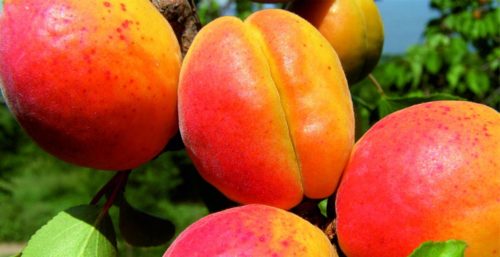
Stage 2. How to choose an apricot seedling in the Urals
For planting apricot in the Urals, it is best to acquire seedlings of several varieties. But the seedlings for planting itself is of paramount importance for the future harvest. You can choose the right grade for the Urals and put it, strictly observing the technology, but if the seedling is not good quality, then the crop can not wait. Therefore, it is necessary to adhere to the following recommendations when buying a seating material:
- do not buy seedlings "from hand", in the market, near the road, etc. So, you risk paying money for poor-quality landing material. The varietal apricot trees can be purchased without fear for their quality, in specialized nurseries;
- special attention in the inspection of a seedling is worth paying to the root system. The roots should not be overwhelmed, missing, with visible defects and damage;
- please note that the varietal trees do not have spines on the trunk;
- a good seedlings have twigs should be smooth;
- when buying, give preference to one-year or two-year apricots.
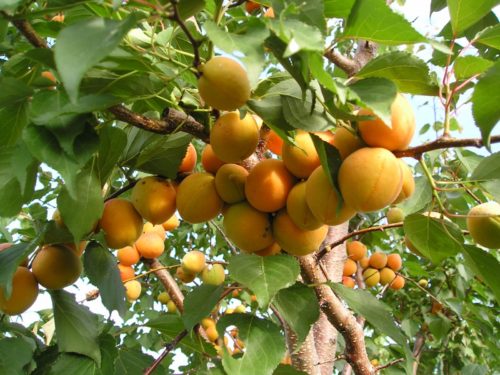
Stage 3. How to plant Apricot in the Urals
Landing apricots in the Urals should pass in strict accordance with the technology:
- apricot landing can be planned either in autumn time or in spring;
- first you need to prepare the landing pit. The size of the pit may vary slightly depending on the size of the seedling, but on average, the parameters of the landing pit - 80 * 80 cm;
- at the bottom of the pit lay a good drainage layer. Apricots react poorly to excessive moisture in the soil, although winter-hardy grades are adapted to such conditions of growth;
- next, you need to prepare a nutritious earth mixture, which is poured over the drainage. To prepare such a mixture you need: 10-15 kg.
- on top of the nutrient soil poured the usual soil, installed in the center of the peg pit, they set the seedlove, spread its roots and start sprinkling the earth. In the process of landing, the seedlock needs to be slightly shaking so that all the airspaces between the roots are filled with soil;
- the root neck after landing should rise above the surface of the Earth on average by 4 cm;
- after the land around the seedling condensed, it is necessary to form a rolling roller, which will facilitate further watering plants;
- seedling after landing necessarily requires abundant irrigation - at least 2 water vestors for one tree;
- the surface of the earth after irrigation should be meditated;
- the seedling is tied up to a peg.
Apricot care in the Urals
If you think that the care of apricots in the Urals is important in winter, then you are mistaken. Correct actions and spring are very important. The care of apricots in the Urals is somewhat different from leaving in more southern regions. Among its features, you can allocate:
- during the spring thaws, the thawed water does not accumulate in a rigorous circle, because Excessive moisture can lead to root reinforcement;
- apricots require regular, but moderate irrigation;
- a special danger to apricots in the Urals is raised by unexpected spring frosts, as well as simply sharp fluctuations in temperature, which kidney may die. Before the expected cold night, smoke - ignition in the garden of wet straw;
- in the Urals, gardeners are very often resorted to such tricks to attract bees to trees, like spraying the crown during flowering with honey water;
- like any fruit tree, apricots require feeding. Since initially seedlings are planted into the prepared ground, it will be necessary to start to fertilize only from 3 years of age. And since the 5-year-old age of the tree, the volume of fertilizers is increased by 2 times. Apricots need organic and mineral fertilizers;
- trimming is the necessary apricot care element, if you want to achieve the highest possible crop from the tree and give it aesthetic appearance. Annually conduct a sanitary, forming trimming, and for old trees - rejuvenating;
- protective measures from diseases. Apricots in the Urals may be subjected to such fungal diseases as swasteporiosis and moniliosis. Mushrooms begin to multiply in unlocked fruits. Therefore, an important role is assigned a harvest. At the branches should not be apricots. In the fall, there is also a spraying of various drugs for the prevention of diseases, for example, burgundy liquid. Remember that any types of treatments with chemical preparations are possible only at the time when the kidneys have not yet revealed, or when the harvest is already assembled;
- preparation for winter. Apricots that are grown in the Urals, although winter-hardy, but without covering for the winter you can not do. Around the trunk pour out an earthen hormick and wrap it in the underfloor material.
Learn more about how to grow apricot in the South Urals, you can from the video.
Thanks to the incredible efforts of breeders, growing delicious and sweet apricots in the Urals is quite a real and feasible goal. Properly selected varieties, knowledge of differences in agrotechnology with the "southern" method of cultivation will help you to grow beautiful apricot trees and collect a chic harvest. Successes in horticultural business!

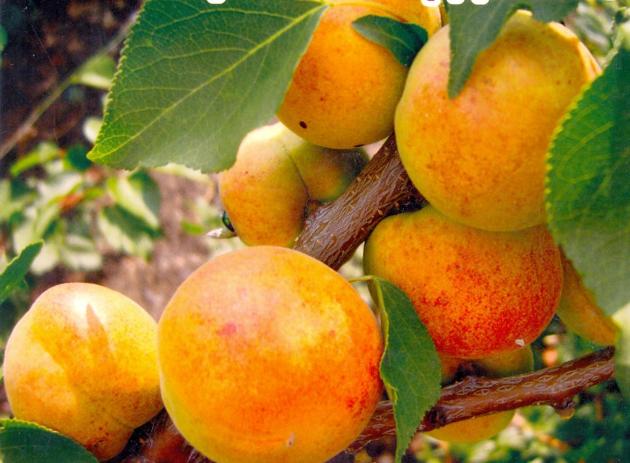
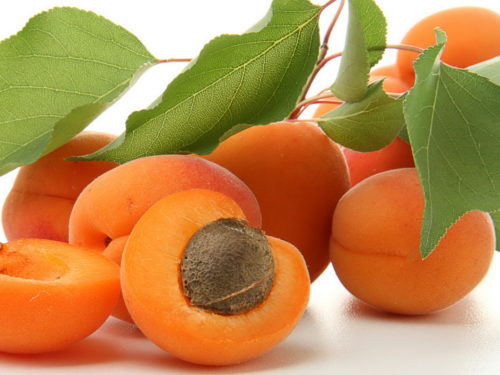
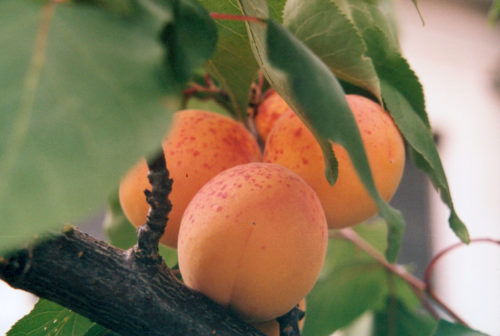
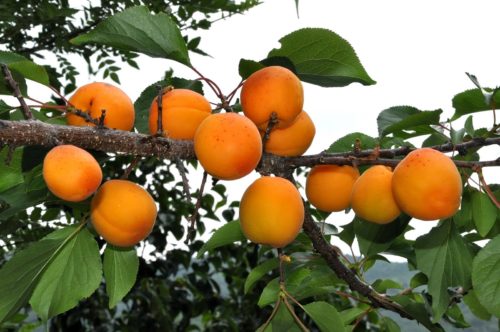
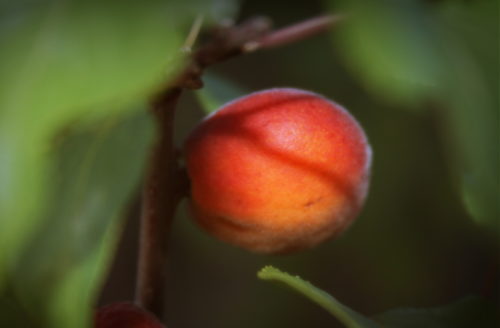
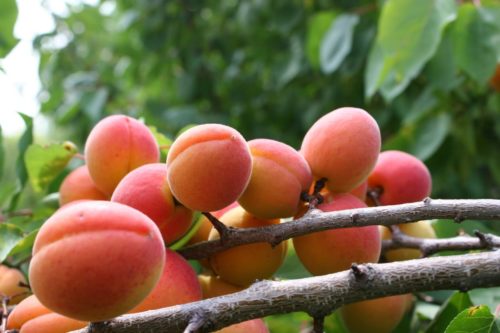












 Start a discussion ...
Start a discussion ...